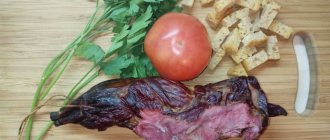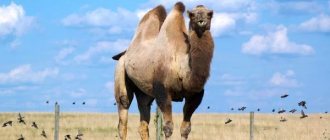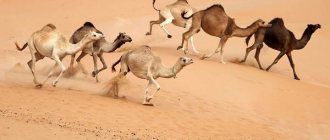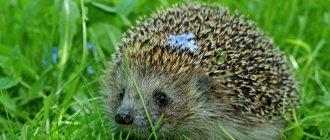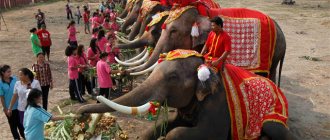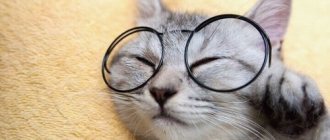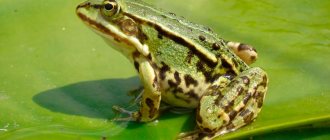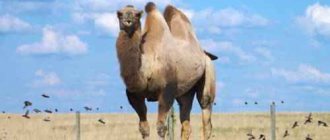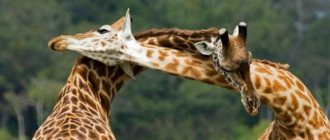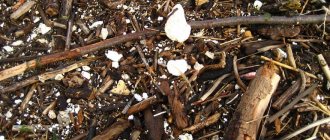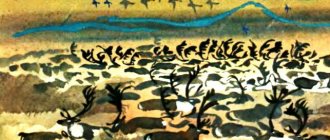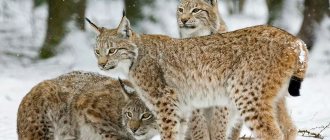Moose are large artiodactyl mammals from the deer family. The name of the animal comes from the ancient Slavic word ols, meaning “red-brown beast.” Moose are considered a valuable commercial artiodactyl species. Attempts to domesticate them for further use as mounts or for milk production ended in failure due to the complexity and cost of breeding.
According to the Ministry of Natural Resources and Ecology, the number of moose in Russia is about 1 million individuals. This is almost half of the total population of the species.
Characteristics and description
Moose are not social animals. They usually live alone, and if they form groups, their number does not exceed 3-4 individuals. Closer to winter, these few herds may be joined by 2-3 males or females, but with the onset of spring such groups disintegrate.
Moose seem to be slow and clumsy animals due to their habit of slowly moving through the forest. In fact, the animal is capable of running fast: in case of danger, the maximum speed of an elk can reach 55 km/h. In addition, moose are good swimmers. They are capable of diving deeply and swimming over long distances: cases have been recorded of animals swimming across reservoirs up to 20 km wide.
The features of elk’s adaptation to its environment are manifested in the following:
- the upper movable lip is used to grip branches and leaves, and also helps remove moss and lichen from trunks;
- a cloven hoof with an internal leathery membrane can diverge to the sides, thereby increasing the area of support and making it possible to move in wetlands;
- The color of the elk makes it unnoticeable in the forest thickets.
Due to their impressive size, moose have virtually no natural enemies. Only bears and wolf packs decide to attack adult males, but fights do not always end in favor of the predators. Most often, cubs become victims of predatory animals.
What does it look like
The appearance of moose has the following features:
- the body is massive, there is a noticeable hump at the withers;
- the head is large, with ears pointed at the top;
- the muzzle is wide, with a large nose, which goes into the upper wrinkled lip;
- the legs are thin, with large, elongated and pointed hooves, additional lateral hooves are lowered almost to the ground and are involved in redistributing the load when moving on snow or soft soil;
- the tail is small, the usual “mirror” for deer (a white spot around the tail) is absent.
What is the difference between elk and deer
Elk and deer belonging to the same family have many external differences that make it easy to determine the type of animal:
| What to pay attention to | Elk | Deer |
| Dimensions | Large massive animal, average weight - 500 kg | Medium-sized artiodactyl, the weight of various subspecies ranges from 180 to 400 kg |
| Proportions | Short body with a large head and thin long limbs | Elongated body with proportional head and shorter legs |
| Neck | Short, with a leathery outgrowth at the bottom | Long |
| Horns | Located horizontally, have spade-shaped processes | Arranged vertically, have many thin processes |
| Habits | Live alone or in small groups | Form numerous herds |
Lifestyle and habitat
The body of these creatures is not entirely proportional, and their overly elongated legs and strong torso hinder some movements. For example, to drink from a pond, an elk cannot simply tilt its head. He has to go deeper into the water, sometimes he kneels, while bending his forelimbs.
By the way, they, having pointed hooves, serve these animals as a good tool for self-defense. When skirmishing with enemies, bears or wolves, such creatures kick with their front legs, the impact of whose hooves can instantly break the enemy’s skull.
Elk is an animal whose fur in winter becomes not only lighter, but also thicker, reaching a length of about 10 cm. And on the neck and withers it grows even more impressive and twice as large.
The horns of these creatures, which change with new ones every spring, are very interesting formations. Initially, they are tender and soft, covered with skin, capable of bleeding when damaged and suffering from parasite bites. Gradually they harden, become stronger and wider.
The older the individual, the more impressive its horns. These decorations first appear on yearling moose. At a young age, they are only small horns. A similar crown in older individuals consists of a flat, wide trunk called a spade. Processes are attached to this formation.
With age, the shovel becomes wider and stronger, and the size of the processes, of which there are usually eighteen, on the contrary, decreases. Therefore, by the shape of the horns it is possible to determine the age of the animal.
The shedding of old bone “crowns” occurs in November or December. During the cold season, moose no longer need them, but, being a heavy formation, hamper their movements, which makes life more difficult in difficult times.
After all, horns are used by males not for protection at all, but to attract females and psychologically influence rivals, serving as a kind of indicator of male strength and dignity. In late autumn, the number of sex hormones in the animal’s blood decreases, as a result, the cells at the base of the bone formations are destroyed, and the horns fall off. Such a loss does not cause pain or anxiety to the elk. Everything happens naturally.
Such beauties are inhabitants of forests, sometimes inhabit steppes and mountain ranges, and actively spread throughout the forest-steppe zone. They prefer wild areas with streams and rivers, and like to settle in swampy areas.
They do not have a special love for moving, and therefore rarely move from place to place, except perhaps in search of food or in winter they try to choose less snowy areas. In the summer, when there is a lot of food, moose prefer to wander alone, but with the onset of cold weather, in order to survive, they unite in small groups and herds.
Moose hunting is not prohibited by law, but is possible only with certain restrictions. This activity is quite popular, especially spreading in recent decades. It must be said that it requires great skill, resourcefulness and patience, but despite the exciting, gambling nature, this is not a safe business at all.
Elk meat has an unusual taste, moreover, unusual, but for many reasons, taking into account certain indicators, this dish, which compares favorably with fatty lamb and pork, and is also well accepted by the body, is often recommended by doctors for use in many diseases. Many interesting delicacies are created from it, canned food and raw smoked sausages are made.
The moose themselves are distinguished by a rather peaceful and very flexible character. By the way, it is quite easy to tame such an animal. To do this, it is enough to feed a wild elk calf, and he immediately begins to feel an attachment to the person, which, with a favorable continuation of the acquaintance, can remain for life.
Moose turn out to be very useful to people. They are actively used for work and transportation in sleighs and on horseback, and milk can be obtained from moose cows.
Horns
Only males have antlers. Their structure has its own characteristics: a short massive trunk extends from the skull, then it becomes flatter and expands, forming a so-called spade, bordered by small processes. The horns increase every year until the age of 8-10 years, and then, along with the aging processes of the animal, their degradation begins. The maximum weight of elk antlers is 40-45 kg.
When moose shed their antlers
Males shed their antlers before the onset of winter: in late November-early December. In early spring, new shoots form on the animal’s head. Initially, they consist of cartilage tissue, are covered with skin and contain many nourishing blood vessels. By summer, the antlers ossify and become hard and durable.
How to determine the age of a moose by its antlers
You can determine the age of a male by looking at his horns as follows:
- determine the number of processes: in the awls (two-year-old males) there is only one process, then their number increases;
- measure the thickness of the horn barrel at the rosette.
The method is not accurate, since the size and shape of the horns are influenced by the condition of the animal, the availability of food supply and some other factors.
When does an elk shed its antlers and why?
In November - December, the elk sheds its old antlers. This process does not cause pain to the animal, but only brings relief. To get rid of antlers as quickly as possible, elk rub their antlers against trees. In April - May, the animal begins to grow new antlers, which finally harden by the end of July, and in August the moose cleans them from the skin. Females do not have horns.
An elk needs antlers not for protection from predators, as it might seem, but only for a mating ritual. They attract females and scare away rival males. At the end of the mating season, they lose their function, and the elk sheds its antlers. This makes his life easier, since in winter it would be difficult to move with such a weight on his head.
And yet, why do the horns fall off? The fact is that after the mating season, the amount of sex hormones in the elk’s blood decreases, as a result, cells appear at the base of the horns that destroy bone matter and weaken the attachment point of the horns to the skull. Eventually the horns fall off. Shed elk antlers, which contain a lot of protein, are eaten by rodents, birds and predators or softened in marshy soil.
Types of moose
Currently, there are two main types of moose:
- American . Found in the northern regions of North America, Alaska, the Far East, and Mongolia. The color is not monochromatic, it may include brown, red, dark gray shades. The horns are more compact with wide branches. In some sources you can find a division of the species into several subspecies depending on the region of habitat: Canadian, Siberian, Kolyma, Kamchatka.
- European . The subspecies inhabits the western and northern parts of the European continent. It is distinguished by more sloping horns and a uniform color of the body and legs. The largest representative of the species is the Irish elk.
Natural enemies
There are not many of them, given the size of the elk. There are only two main ones - the wolf and the bear. Bears attack moose when hungry ones emerge from their dens after hibernation. The attack tactics are chosen so that the elk cannot fight back with its front paws. To do this, they try to drive the elk into dense thickets. The wolf chooses places with little snow to attack. In deep snow, a predator cannot catch even a young elk calf. As a victim, wolves try to choose a sick animal or young animals. An adult moose is attacked only in a pack, approaching it from behind.
Return to content
How much does it weigh
Elk is the largest representative of its family. The body of males reaches 3 m in length, while the height of the elk at the withers is 2-2.3 m. The weight of the animal depends on the habitat. Thus, the average weight of an adult moose is 400-600 kg, but individuals living in cold climatic zones have more impressive sizes. The largest representatives of the genus are found in Canada and the northern regions of Russia. The maximum documented weight of an elk is 820 kg. The male shot in the United States was a subspecies of Alaskan moose. Females are smaller in height and body weight.
Tags
the moose has to the moose.The female moose is called Why is the moose called Why is the moose called moose why is the moose called which moose antlers moose applications cattails of the cervid family. from deer. from deer.
deeranimalverymoreanimalsauthorbecamewhathis ownquestionscommentarylifeofwithersmalesvidegodaruledthebodycatelklegslongdogelkinterestinglargebackmetersreachtheworldafterlinkphotofactssimplewinterbirdsareastheirlessfemalesnaturesitewolvesmainphotosforestnewperiodfirstnewsindividualsmaymilk caretakerscomposed of groupsoften classes of posts
Reproduction
Moose are monogamous animals, but if a moose cow rejects its partner for some reason, it looks for another female to mate with. The duration of pregnancy is 8 months. The female brings 1-2 cubs weighing up to 10 kg.
For the first few days, the babies still move uncertainly and, in the absence of their mother, hide in the grass or bushes. On day 5, the cubs are already able to follow the female. Two weeks after birth, moose calves begin to try hard food. By the beginning of winter they usually gain weight up to 100 kg.
Gon
The rutting season for moose begins in the fall. At this time, the behavior of the males changes: they moo protractedly, break off tree branches, trample and break the ground in their territory with their hooves. Males' appetite decreases, aggression increases, and they become less cautious. First, more mature males begin to walk, and then those who have just reached sexual maturity.
The mating season for moose lasts for a month.
A little about the deer family
There are 51 modern species in the deer family, and there used to be even more. Moreover, there are 3 subfamilies with 19 genera. The bulk of animals belong to various deer, and the genus Elk of this family includes only two species - European and American.
Deer are widespread in Europe, Asia, and both Americas. Explorers and settlers brought the animals to Australia and New Zealand, where they had never been found. Reindeer is a domesticated animal and is the “breadwinner” for a number of peoples of the European, Asian and American North.
The smallest representative of the family is the pudu, and the largest is the elk. Most deer have antlers on males. The exception is the antlerless water deer (swamp musk deer), and the reindeer, in which both males and females have antlers (mug deer).
Where does it live?
The habitat of moose extends across the temperate climate zone of the Northern Hemisphere. Their greatest concentration is observed in broad-leaved and mixed forests. Less commonly, animals can be found in such natural areas as steppes, forest-steppes, taiga, and forest-tundra.
The most numerous populations of the animal live in Canada, the northeastern United States, Russia, Scandinavia, and some countries of central Europe.
BUFFALO
Where live
The natural habitat of moose is forests with diverse vegetation, alder, aspen, willow forests, overgrown burnt areas, clearings, mountainous terrain covered with thickets of bushes and trees. In the summer, moose spend a lot of time in the water, so they move closer to rivers, shallow channels and lakes, and swamps.
Moose lead a sedentary lifestyle. With a sufficient food supply, they remain in their territory throughout their lives. An exception is the seasonal migration of animals from regions where large amounts of snow fall in winter. Thick snow cover makes it difficult for the massive animals to move, making them easy prey for predators.
Range, habitats
The total number of moose in the world is close to one and a half million. More than half of them live in Russia. The rest live in Eastern and Northern Europe - Ukraine, Belarus, Poland, Hungary, the Baltic States, the Czech Republic, Finland, and Norway.
This is interesting! Europe exterminated its moose in the 18th and 19th centuries. It only came to its senses in the last century, when it began to carry out active conservation measures for the surviving single specimens, exterminating wolves, and rejuvenating forest plantations. The moose population has been restored.
There are moose in northern Mongolia, northeastern China, the USA, Alaska and Canada. For habitats, elk choose birch and pine forests, willow and aspen forests along the banks of rivers and lakes, although they can live in the tundra and steppe. But, nevertheless, it gives preference to mixed forests with dense undergrowth.
Return to content
What does it eat?
Moose are herbivores. The basis of their diet consists of herbs, lichens, berries, mushrooms, leaves and young shoots of trees. In the summer months, animals spend a lot of time near water bodies, eating water lilies, sorrel, marigold, and sedge. In winter, when there is a lack of food supply, moose gnaw the bark from branches and trunks.
Animals consume quite large amounts of food. In summer, the daily norm of green mass reaches 35 kg; in the winter months, they are forced to consume less due to lack of feed, but not less than 15 kg per day.
Elks look for salt licks in their habitat and visit them regularly.
LAMA
Similarity with ancient tools
In the old days, tools were made from scrap materials, since the services of a blacksmith were too expensive. For example, a stick with a branched tip was often used as a plow. This design made it possible to quickly plow the soil, since many branches loosened the soil well.
But one day one person noticed that elk's antlers were very similar to the tip of a plow. And so, not much time passed before all the people in that area began to call these animals elk. Soon this nickname was adopted by residents of neighboring villages, and after them all others. As a result, now all Russian-speaking peoples call moose elk. And if at first such a nickname applied only to males, then over the years it became attached to the entire species as a whole.
Well, let’s summarize: elk is an elk. This epithet is applied to it due to the fact that its horns resemble an ancient tool - a plow. And although today this device can only be seen in museums, the old nickname still refers to the elk animal.
Why do moose eat fly agarics?
Remedies from fly agarics have long been used in folk medicine as an antitumor and antibacterial agent; it was also used to restore tissue and eliminate internal parasites. The reason why moose eat fly agaric mushrooms has not yet been precisely established. According to many researchers, it also lies in certain medicinal properties of the mushroom. It has been established that animals eat only a few fly agarics, which is a very small dose considering the weight of the animal.
Moose as a pet
There is a practice of domesticating moose. After the first feeding, a wild elk calf becomes attached to a person for life. Females easily get used to milking. Moose are very hardy animals; they can be harnessed to a sleigh and also ridden on horseback. They are indispensable in swampy taiga, difficult forests, and muddy roads. In summer, they can only be used for work at night, as animals can die from the heat. It is much colder in winter, so there is no such restriction.
Elk meat is less fatty and tougher than other deer meat, and is used in the production of raw smoked sausage and canned food.
Why is the elk called elk?
In many sources you can find a version that the moose received its nickname due to the similarity of the shape of the horns with the plow - the simplest agricultural tool for plowing the land. In fact, the choice of nickname is related to the etiology of the words “plow” (fork of a tree, fork) and “plow” (branched, forked). In the Old Church Slavonic language, the words elk and horned were practically synonymous and could be used in relation to all animals with horns.
ZEBU
Related words
The Proto-Slavic word *socha is traced back to the Proto-Indo-European basis *k'ak-/*k'ank- 'bough, spear'. Related words include Lithuanian šakà 'branch, bough, fork'; Latvian saka 'fork of a tree', sakas 'yoke, yoke'; Old Indian çā́khā 'branch, bough', Gothic hôha 'plough', etc.
The end of the plow, which was used to plow the ground, was called a coulter . Almost no one uses the plow now, but the word coulter continues to be widely used today. This is the name, firstly, for the cutting edge of agricultural implements used for plowing or loosening the earth (plough, cultivator). Secondly, the coulter is also a part of the seeder designed directly for sowing seeds into the soil. Also called a coulter is a metal plate at the carriage of an artillery gun, which rests on the ground and prevents the gun from rolling back during a shot.
In Russian there is a noun soshka , which in origin is a diminutive form of plow. It means a support stick with a fork at the end. Nowadays, a bipod is usually called a two-legged stand for resting a firearm. In the past, it was a stick with a spear, hence the name. The “horned” support in dialects is also called the word rassokha of the same root.
Linguists suggest that in addition to the feminine noun sokha 'branched branch' in the Old Russian (or even Proto-Slavic) language there was once a masculine variant sokh' (sokh). From it, with the help of a prefix, the word staff , originally denoting a stick with a curved end (with one, and not two, like a plow).
To formulate the meaning of the word plow, we have repeatedly used the noun bough 'tree branch'. Most likely, it is also etymologically related to the plow. Only suk goes back to that variety of the Proto-Indo-European stem, which was complicated by the insertion of the nasal sound *n: *k'ank- >*sonk-. As a result of the tendency towards open syllables in the Proto-Slavic language, the combination *-on- between two consonants was transformed into the nasal vowel *ǫ (a note about these sounds can be read here). Further, from the Proto-Slavic *sǫkъ the Old Russian sѫk (souk) was formed, where the nasal vowel at the root quite soon turned into the sound [у], and at the end of the word the reduced vowel [ъ] was lost. This is how the word suk arose in its modern form.
There is an opinion that all the words analyzed in our article are in a distant etymological relationship with the verb sech' 'cut, cut', ot sek at, etc. In other words, a branch or plow is something that is cut off from a tree or something that has a dissected shape. Of course, these genetic connections are not recognized by modern speakers of the Russian language and are generally restored in some places tentatively and with difficulty, therefore in our language at the current stage of its development the words plow, sokhaty, posokh, souk and sech are not cognate. Only the words plow, bipod and coulter remain the same root in relation to each other.
.
Literature:
Otkupshchikov Yu. V. To the origins of the word: stories about the science of etymology. - M., 2005.
Trubachev O. N. Craft terminology in Slavic languages // O. N. Trubachev. Works on etymology: The Word. Story. Culture. - T. 3. - M., 2008.
Vasmer M. Etymological dictionary of the Russian language. - T. 3. - M., 1987.
Tsyganenko G.P. Etymological dictionary of the Russian language. – K., 1989.
Chernykh P. Ya. Historical and etymological dictionary of the modern Russian language. – T. 2. – M., 1999.
Dictionary of modern Russian literary language. - T. 14. - M., 1963.
Interesting facts about moose
- Measures taken since the end of the last century to restore the moose population have allowed the number of animals to increase. Currently, the species is not in danger of extinction. In the Red Book of Russia, elk are classified as species of least concern. The animal is listed in some regional Red Books.
- The ancestor of the modern common moose is considered to be the broad-fronted moose, which lived in northern Europe and Asia about 2 million years ago. Judging by the animal remains found, their weight reached 1000-1200 kg.
- The Ussuri moose is the smallest of the representatives of the genus. Its weight barely reaches 300 kg, and its height at the withers ranges from 170 to 190 cm.
- Moose living in Sweden and Norway periodically give birth to young animals completely covered with white fur. Scientists who studied one of these animals came to the conclusion that the white moose is not an albino. Most likely, the appearance of individuals with a rare color in the northern regions of the continent is caused by certain genetic mutations. Today, about 100 white moose live in the countries.
- The shape and size of moose droppings depend on gender and age. Experienced hunters can use the excrement left behind to obtain basic information about the animal: identify a male or female, determine their age and diet.
What is the correct name for a female deer?
Female European and sika deer are called doe (note, not female deer). A female reindeer is called a female reindeer.
Interesting materials:
What's the first thing to pack when moving? What did Peter I take from Europe? What to serve with pancakes for Maslenitsa? What does DirectX 12 support? What is meant by dating? What do plants absorb during photosynthesis? What will an ultrasound of the abdominal organs show? What is similar to lychee? What is healthier: raw or boiled eggs? What is good to give to dogs?
